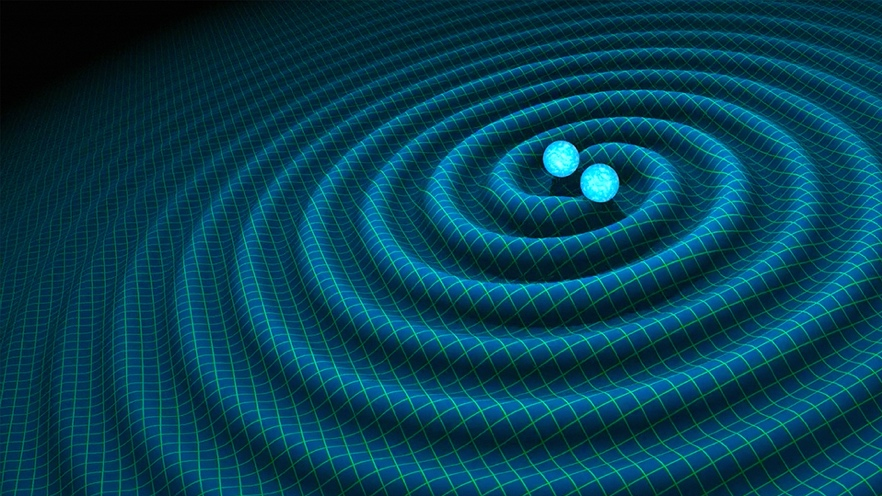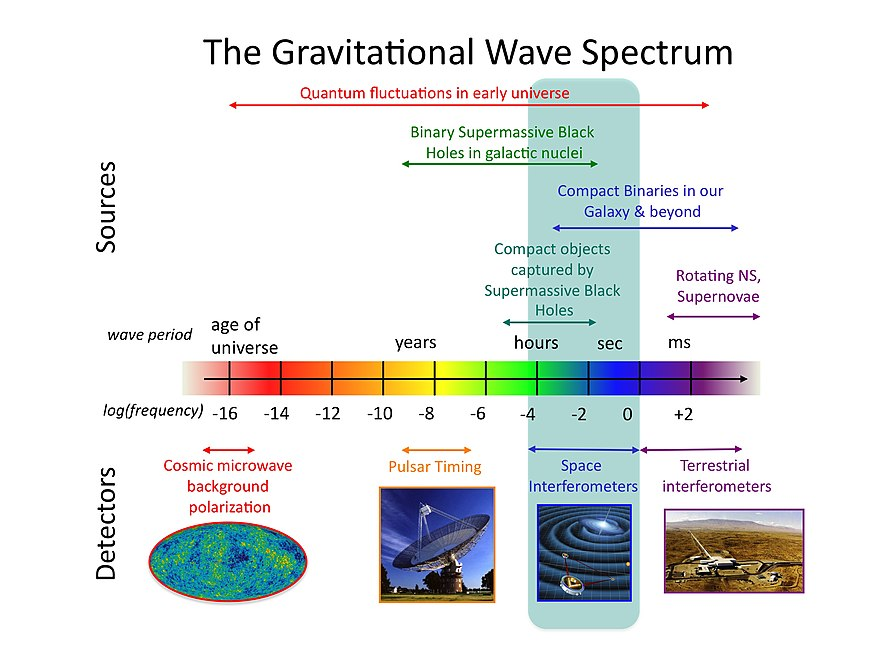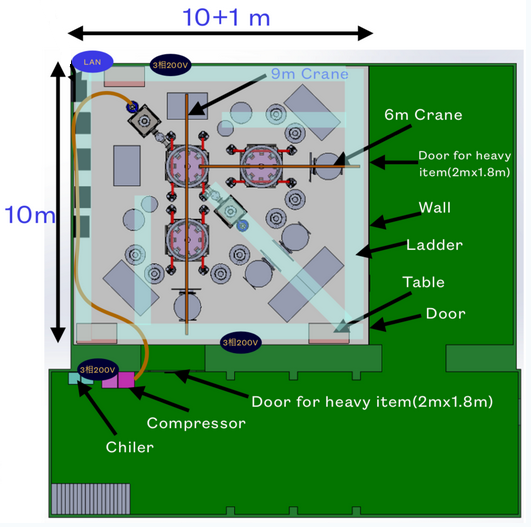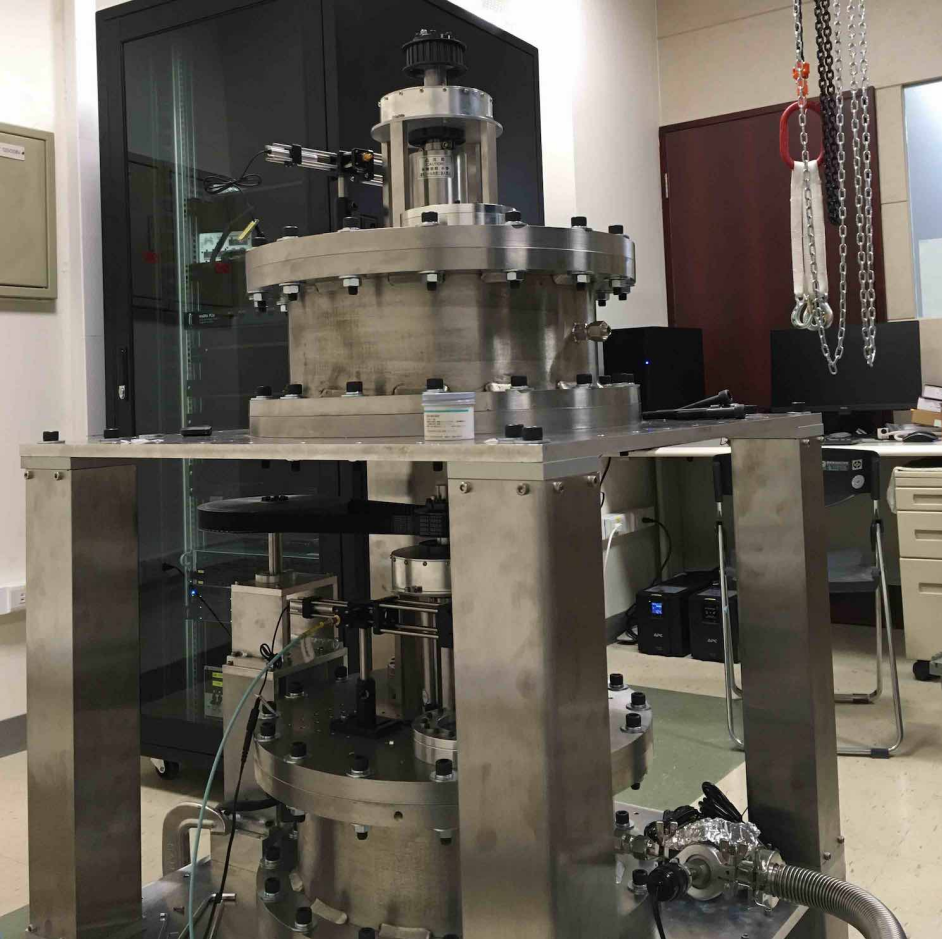Overview
| Name | Gravitational Physics Experiment Group |
|---|---|
| Place | Academia Sinica Institute of Physics, Taiwan National Central University, Depertment of Physics |
| Professor | Yuki Inoue(PI), Henry Tsz King Wong |
| Reserch key word | Gravitational Wave, Black Hole |
| Lab | ASGRAF, NCU GW lab |
Gravitational Wave
What is gravitational wave
Gravitational waves are ripples in space-time caused by massive objects moving with extreme accelerations, which propagate as waves outward from their source at the speed of light. Albert Einstein predicted the existence of gravitational waves in 1916 in his general theory of relativity. However, the first direct observation of gravitational waves was not made until 2015, when a signal generated by the merger of two black holes was received by the LIGO gravitational waves detectors
 Fig. An artist's impression of gravitational waves generated by binary neutron stars.[R.Hurt/Caltech-JPL]
Fig. An artist's impression of gravitational waves generated by binary neutron stars.[R.Hurt/Caltech-JPL]
In gravitational wave astronomy, observations of gravitational waves are used to infer data about the sources of gravitational waves. Sources that can be studied this way include binary star systems composed of white dwarfs, neutron stars, and black holes; events such as supernovae; and the formation of the early universe shortly after the Big Bang. Historically, scientists have relied almost exclusively on electromagnetic(EM) radiation to study the Universe. Gravitational waves, however are completely unrelated to EM radiation. More importantly, since gravitational waves interact very weakly with matter, they travel through the Universe virtually umimpeded, giving us a clear view of the gravitational-wave Universe.

Fig. The gravitational waves spectrum with sources and detectors[NASA/gsfc]
LIGO
LSC contribution from Taiwan
One of the most exciting discoveries of this century was the direct detection of the gravitational waves (GWs) with the Advanced LIGO and Advanced Virgo experiment. The frontier of gravitational wave science gradually moves from the first detection era to test of gravitational physics with statistics of gravitational wave events. The gravitational wave is one of the most important predictions of Einstein’s theory, which were established 100 years ago. This theory extends the gravity theory beyond the Newtonian mechanics and predicts gravitational waves as distortions of time and space. To detect the tiny distortion, the displacement of the test-masses is measured by interferometer type gravitational observatory. The typical length of an interferometer arm is on the order of kilometers, thus requiring a strain sensitivity of around 10−20m/√Hz. The worldwide collaboration with km-scale gravitational wave detectors, such as advanced LIGO (aLIGO), advanced Virgo (aVirgo), and KAGRA.Nowadays, collaboration can observe the gravitational wave event every 10 days. Worldwide joint observation group have taken data in Observation-1 (O1), Observation-2 (O2) and Observation-3 (O3). In previous measurement, they observed events of compact binary systems, such as black holeblack hole (BH-BH) merger, neutron star-neutron star (NS-NS) mergers, and neutron star-black hole (NS-BH) mergers.
LIGO stands for "Laser Interferometer Gravitational-wave Observatory". LIGO consists of LIGO Hanford Observatory and LIGO Livingston Observatoty, each with two 4 km long arms.
These instruments act as gravitational waves anntena.
From 2021 June, our group was also joined to LIGO Scientific Collaboration (LSC) for the calibration and coating studies. In LSC, Yuki Inoue contribute the following items as PI of NCU:
• Development of error estimation pipeline as a member of calibration
• Development of cryogenic coating technology and its characterization system as a member of optics group
Detail of these project shows the following section.
Calibration
Coating
ASGRAF
What's ASGRAF

ASGRAF(Academia Sinica GRAvitational research Facility) is a laboratory being built at basement of the Institute of Physics. It will be commissioned within 2022. The first phase will have a floor area of (10m X 10m) and a C-10000 clean room, while a C-1000 sub-section is foreseen in the future.
ASGRAF will be a platform to conduct variety of research projects to support the group's efforts in the LIGO program, and to explore new gravitational physics experiments. Taiwan researchers are welcomed to perform research in ASGRAF by collaborating with our group or by initiating new ideas.
Enviroment
We are going to establish the lab in basement of ASIOP(B1). The lab will be finished in 2025. The instruments inside the lab would inclued: Ground coating, Class 1000 clean room, 2 cranes, 3 Power distribution cabinet, and so on.

Cryogenic
From the Fluctuation Dissipation Theorem, we can see a basic pattern, F^2(f)~kBTb, that the force fluctuation power spectrum is proportional to the magnitude of the coefficient of dissipation b. Coating mechanical and optical losses(dissipation) generates thermal noise and limits the detector's sensitivity.
One effective approach for reducing thermal noise is to cool the test mass. We design and build a cryogenic system to push down the noise and investigate some properties in low-temperature conditions. We adopt a pulse tube cryocooler with two stages (50K and 4K) in our system.
With single crystalline silicon test masses(~200 kg) operated at 123K, the LIGO voyager can reach low mechanical loss, which decreases with temperature(low thermal noise). and zero thermal expansion coefficient at about 123K eliminate thermoelastic loss and thermoelastic noise.
We study the cryogenic system for the CHRONOS environment and also give contributions to the LIGO.

Calibrator
The response of the interferometer is crucial in detection of Gravitational Wave. To study the interferometer response, we inject signals by calibration instruments, called calibrators. There are two types of calibrators, photon calibrator(PCal) and gravity field calibrator(GCal/NCal) developed in current detectors.
Photon calibrator moves the interferometer mirror by photon pressure to understand the response of interferometer. It is used in LIGO, Virgo and KAGRA currently. On the other hand, gravity field calibrator generate dynamic gravity field by multipole mass distribution to move the mirror.
Overview of GCal and PCal
cite: T Akutsu et al. "Overview of KAGRA: Calibration, detector characterization, physical environmental monitors, and the geophysics interferometer"
In: Progress of Theoretical and Experimental Physics
(Feb.2021)
 Fig. Gravity CALibrator in AS
Fig. Gravity CALibrator in AS

